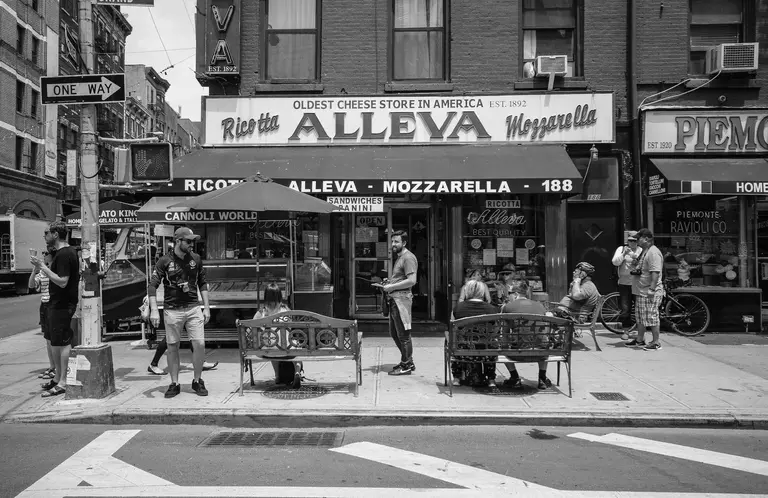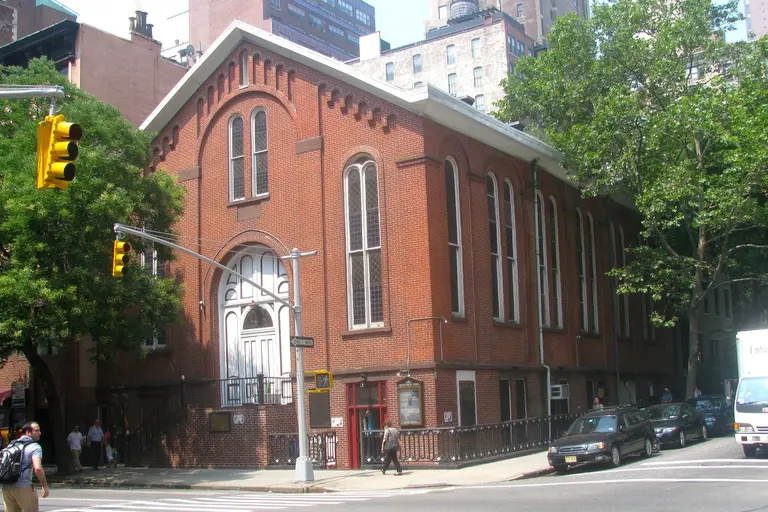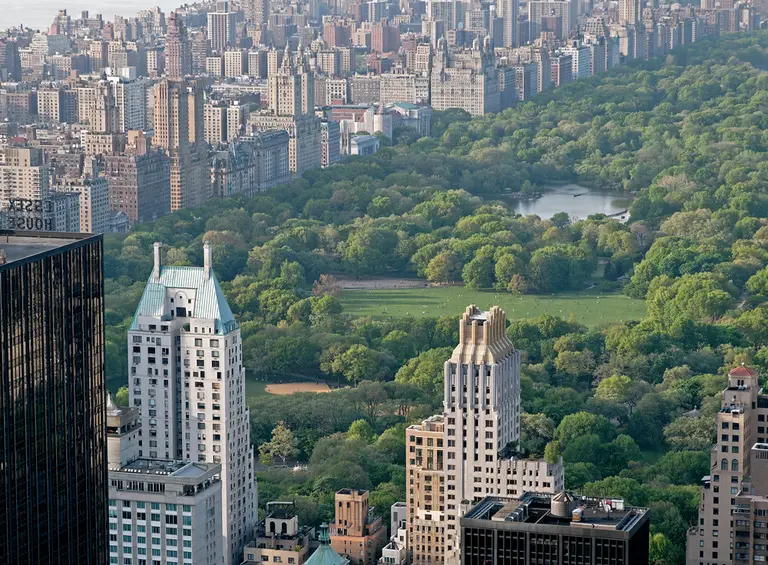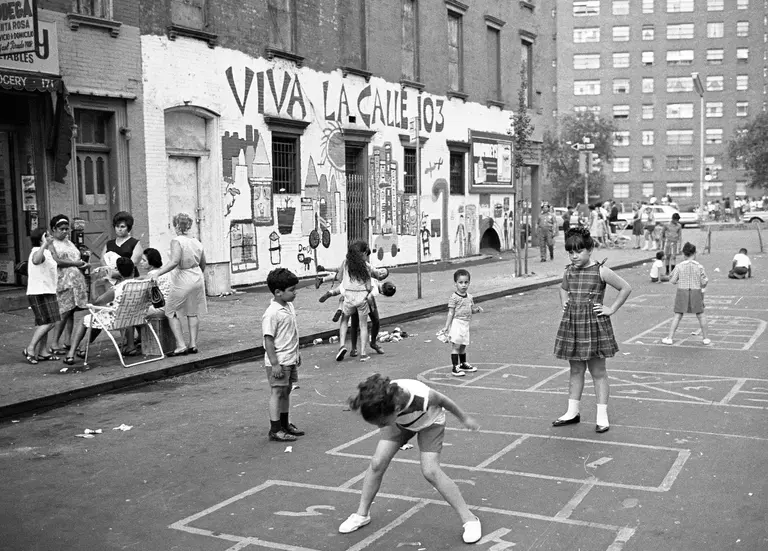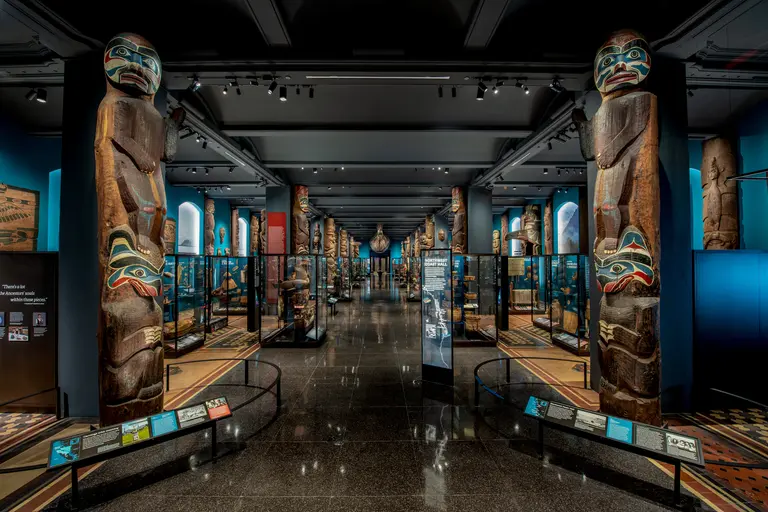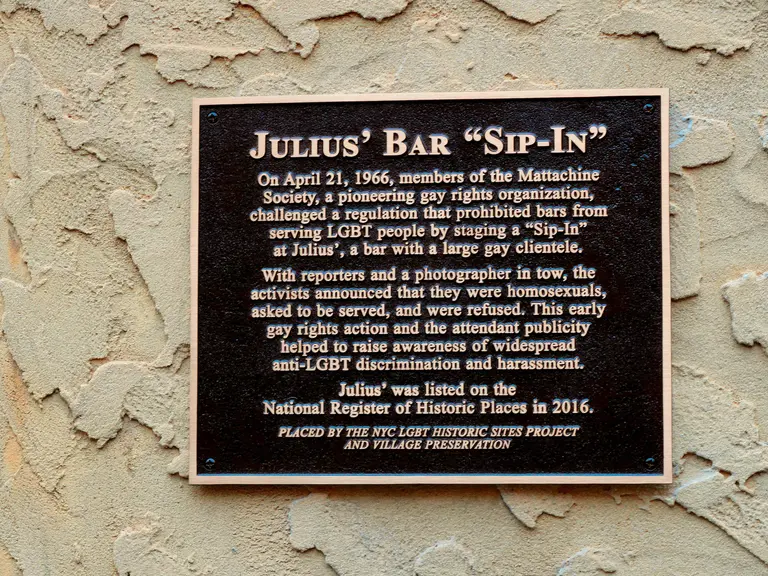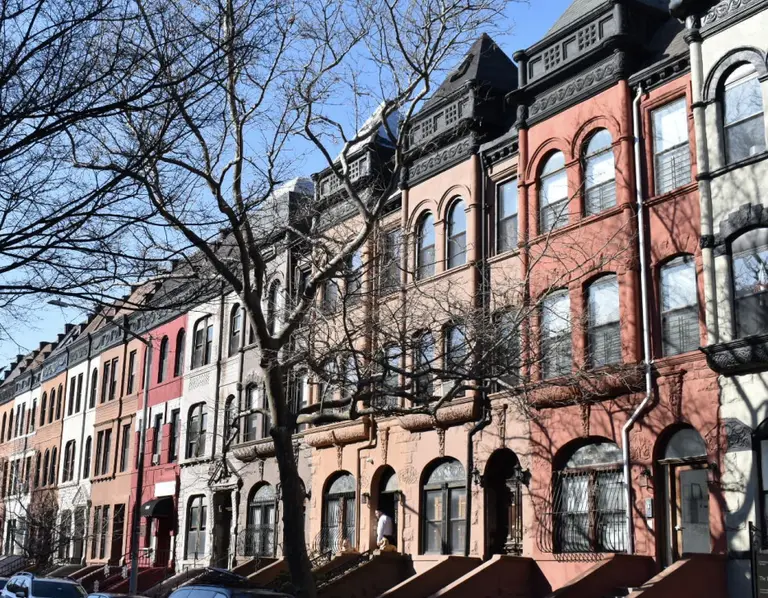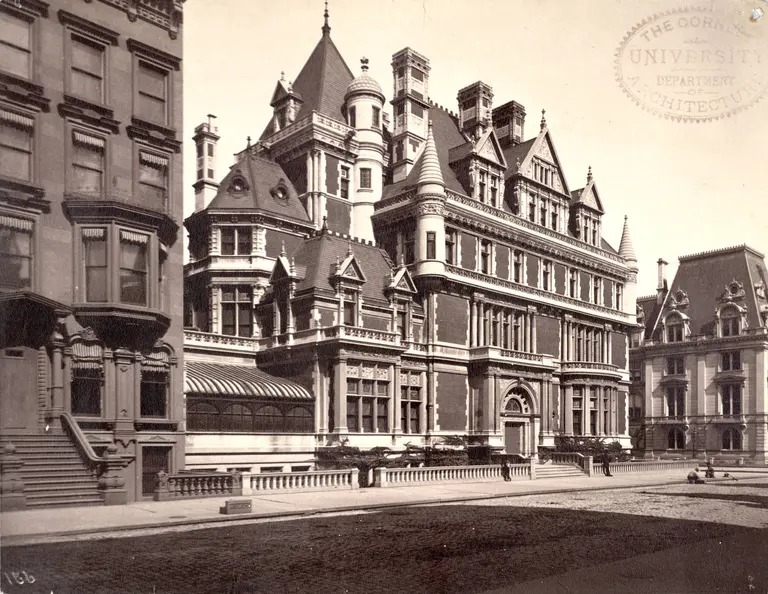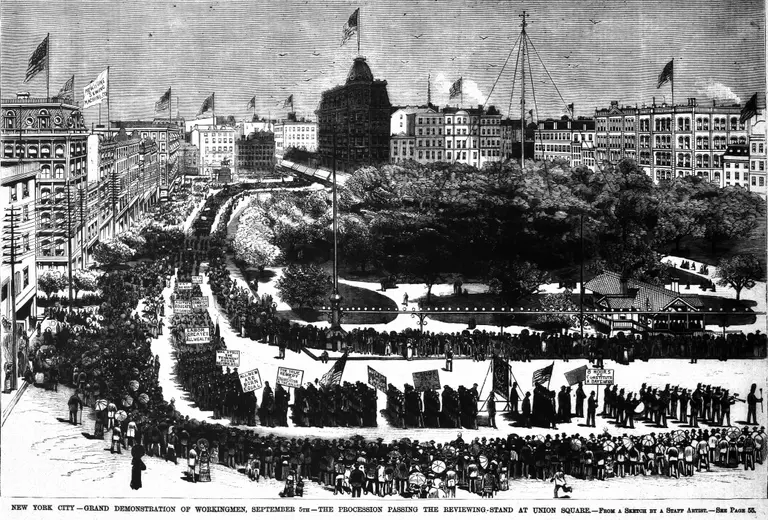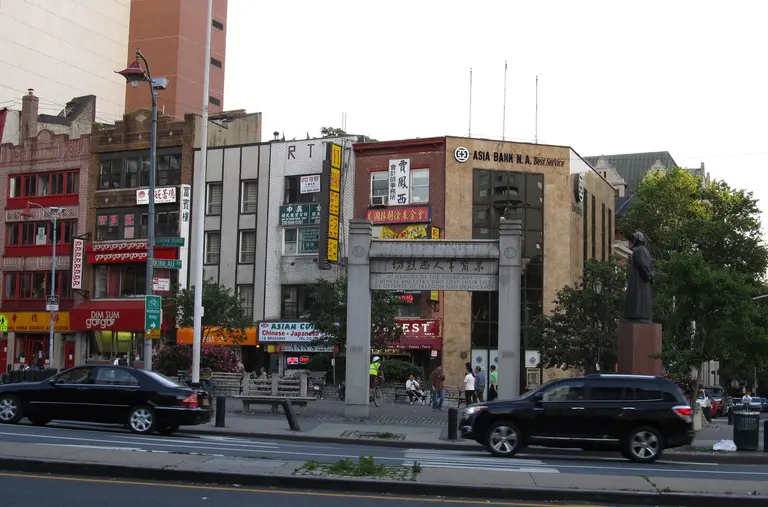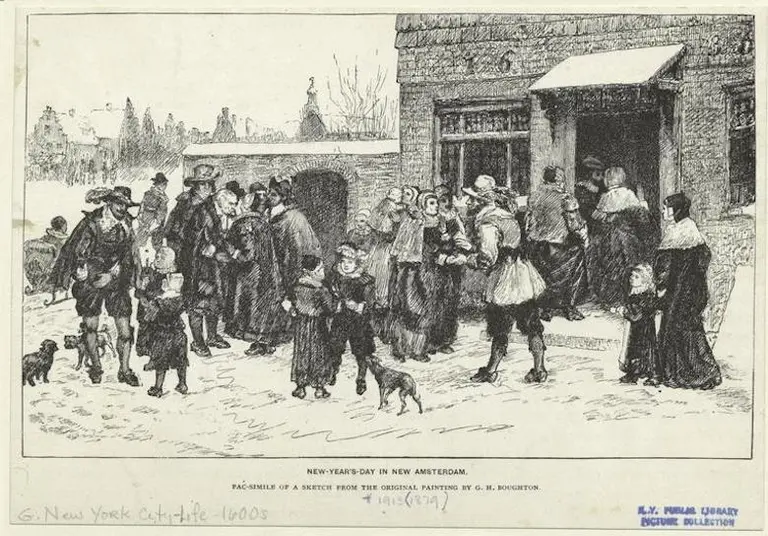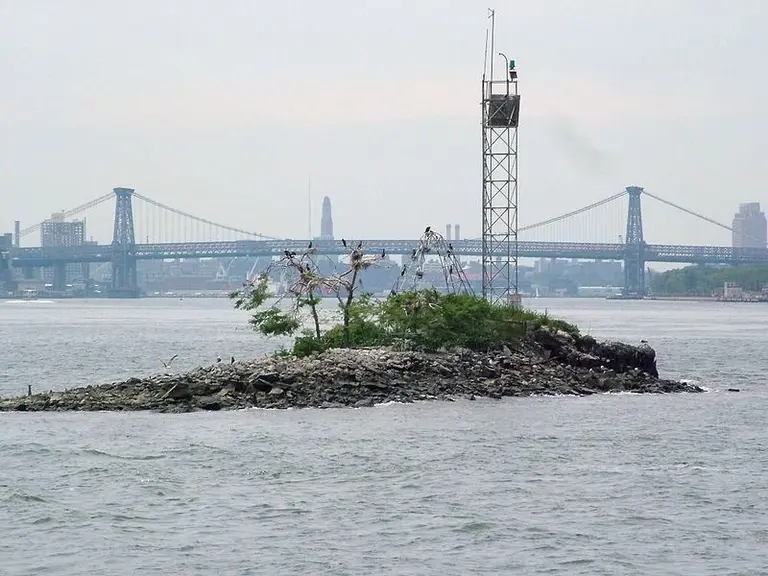NYC’s historic Five Points neighborhood is officially recognized with street co-naming
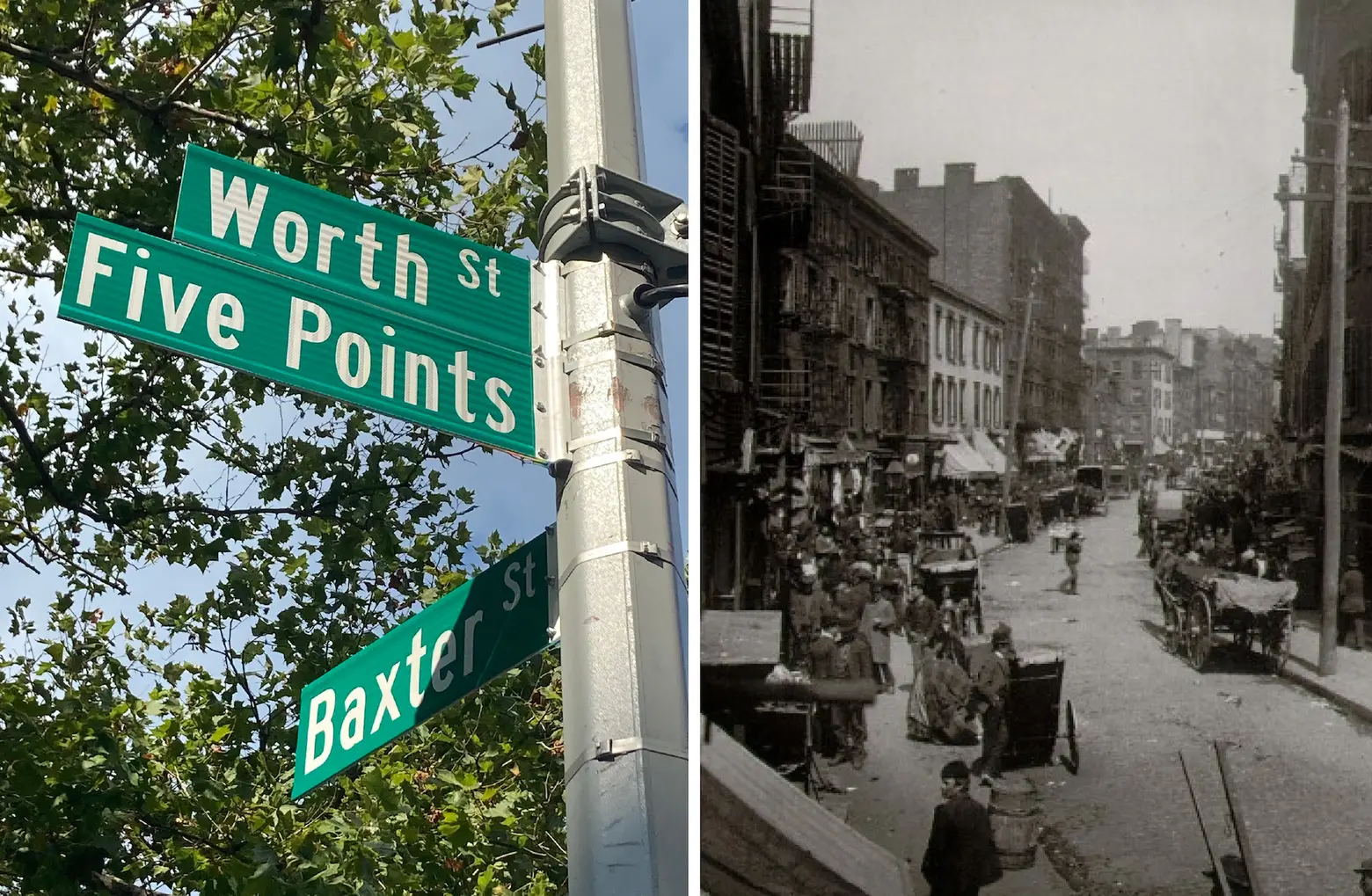
Photo on the left courtesy of Lloyd Trufelman; Photo on right courtesy of Wikimedia
The intersection that formed the notorious Five Points neighborhood in Manhattan will now be officially part of New York City’s street grid. The city has installed a sign at Baxter and Worth Streets in Lower Manhattan, marking the exact location of the original Five Points, a notorious 19th-century slum that was home to a diverse group of immigrants. Before this year’s street co-naming, there was no official marker at the site to honor the historic spot, considered to be one of the country’s first “melting pots.” But a successful effort spearheaded by Lloyd Trufelman, who is a tour guide with the Municipal Art Society of New York, along with groups like the New York Adventure Club and the Historic Districts Council led to the street co-naming, symbolizing the return of Five Points to the city 125 years later. Ahead, hear from Trufelman about his campaign to recognize the legendary neighborhood and learn how to sign up for his upcoming walking tour.
The groups, along with urban archaeologist Joan Geismar and Columbia University history professor Kenneth Jackson, petitioned Manhattan’s Community Board 1 for a Five Points street sign at the corner of Baxter and Worth Streets, the intersection which literally formed the Five Points.
After the community board approved it, the City Council passed the co-naming legislation during a virtual meeting last year. With support from local Council Member Margaret Chin, the city’s Department of Transportation recently installed the sign at the site.
In an interview with 6sqft, Trufelman said he hopes the new street sign is just the first step towards a more elaborate commemoration of Five Points.
What got you involved with the history of Five Points?
I had heard of the Five Points over the years while reading various NYC history books but really focused on it after seeing Scorsese’s Gangs of New York in 2002. I had no idea that the neighborhood was so large, active, and played such a key role in the eventual growth of the city.
Why do you feel this history is so important to the city?
The story of the Five Points is all about the role immigration and immigrants played in the early development of the city. Primarily Irish, but other ethnicities as well. And the nearby Free Black population lead to the Five Points becoming the first integrated neighborhood in the city and accelerated NYC’s dynamics of diversity. And the fact that the neighborhood entirely vanished without any sort of official marker made its stories and forgotten legacy even more important.
Was it difficult to get the city on board with the street co-naming?
It wasn’t super difficult, just a long process. The City of New York has a world-class bureaucracy, so things take time. That being said, Community Board 1 reviewed it promptly and approved it unanimously in November 2019. Then COVID hit, so the City Council wasn’t able to approve it until a virtual meeting at the end of 2020. The support of Councilmember Margaret Chin was essential to this effort and was much appreciated. Hopefully, this new official co-naming sign that has put the Five Points back on Manhattan’s street grid after 125+ years will be the first step towards a more elaborate, historically accurate NYC monument commemorating the Five Points.
What’s something interested about Five Points that you think most people may not know?
The long-standing reputation of the Five Points being solely a repository of crime, filth, disease, suffering, and misery was not accurate. In fact, archaeology confirms the majority of Five Points residents were not evil criminals, they were just poor. As with any slum, of course, there was crime, disease, and poverty, but most people had real, legal jobs, including shoemakers, tailors, masons, grocers, cigarmakers, liquor dealers, and laborers. This confirms Walt Whitman’s 1842 description of the neighborhood’s residents as “not paupers and criminals, but the Republic’s most needed asset, the wealth of stout poor men who will work.”
+++
Lloyd Trufelman is leading a walking tour with MAS called “Ghosts of the Five Points” on Sunday, October 31. The in-person tour will take participants to sites like the Old Brewery/Mission House, Bandit’s Roost, Collect Pond, and other places “where the voices of Five Points echo through our modern streets.” The roughly two-hour tour costs $30 for non-members and $20 for MAS members. Buy tickets here.
RELATED:
